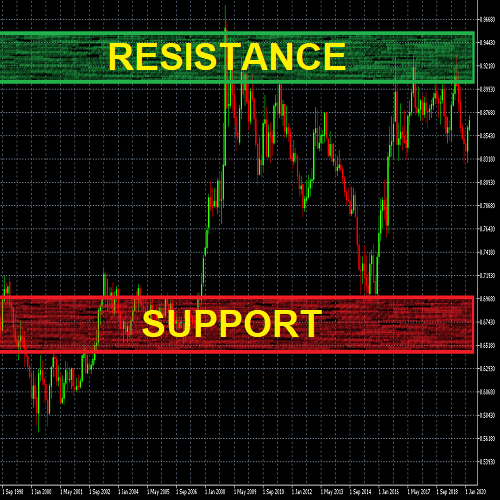5 Short Selling Tips for Success
Shorting a stock can be a great tool for stock traders. Learn how to short a stock properly with Queensway before using this strategy in your trading.

Trading Bear Markets with Success
Short selling is a little more complicated than buying a stock. In traditional stock trading, it is much riskier. However, it provides opportunities for traders to profit even when things are generally bad in the market. It is, therefore, a great addition to any trading strategy.
As a trader, it is worth knowing how to short a stock works and understanding whether it is the right decision. Proper preparation and research on shorting a stock most effectively, are critical.
Here are 5 tips on how to short a stock successfully:
1. Understand what shorting a stock means
On an online trading platform, opening a short or a long trading position usually requires the same, traditional steps from a trader. However, the process behind this strategy is at the same time, very different. It is therefore important to understand how these trades work.
A long position is in simple terms, buying shares of a stock. Shorting a stock, on the other hand, is selling it with the purpose of buying it back later at a lower price because you believe that the price will fall.
But because you do not actually own any shares, to begin with, you must first borrow them from your broker and selling them. You will then buy them back at a lower price and return the borrowed shares to your broker.
Assuming you predicted correctly, you would have bought them for a lower price than you sold them for and kept that profit.
2. Read the fine print
Many online brokers will not sell the stock you have shorted before you buy it back and closed your position. However, more traditional stock brokerages do have that right.
Many of them will also charge interest on the loan of the shares that you have sold. They may also require you to have a higher balance in your account in order to short an asset like a stock than the minimum required to trade. Make sure that you have all of this information in mind before you initiate your short-selling strategy.
3. Know the reasons why you want to short a company
Before investing in any company, it is important to understand the firm itself and the sector it evolves in. This is true for any markets you want to invest in. Make sure to do basic research before opening any trading position.
Only short a stock if you believe that the company is currently overvalued and will soon correct itself. Make sure you have the information to back up this belief through technical analysis or fundamental analysis.
You can use technical analysis to confirm your belief through the analysis of charts and historical prices.
If technical indicators like the RSI are showing signs that the share is overbought, then prices might soon drop. Or if prices are approaching major resistance, then there is a possibility of the asset losing ground once this level is reached.
You can also look around at what other stocks in the same sector and market are doing and analyse fundamental factors to know more about the intrinsic value of an asset.
Fundamental analysis of a company relies on figures, ratios and statistics on how a company performs. You can have a look at the revenues, profits, operating profitability, solvency ratio, etc.
It’s also important to understand the industry in order to be aware of the trends in that sector, the potential growth and the supply and demand relationship.
With all your research, you can use a valuation analysis process like the discounted cash flow method to determine the value of a company.
If its market price is higher than its intrinsic share price, then the stock is overvalued. You might be able to profit from this by opening a short position on this company.
4. Make sure short positions are included in your trading plan and you are controlling your risk
One of the most important ways of minimising your trading risk is to follow your trading plan.
This trading plan should describe how you plan on entering and exiting the markets and the kind of risk management rules you are going to follow.
Start thinking about the kind of markets your strategy suits best.
Some trading methods work better in trending markets, while others are more suited for flat markets. Dealing with short trading positions should, therefore, be a part of your trading strategy.
Before you open a trade, you need to know how much you can afford to lose and how much you expect to gain.
Do not forget that it is best to avoid keeping a position open if it is going against you and that you should let your profits run. The best way to make sure you do this is to set up stop-loss and take-profit orders from the very beginning.
5. Use short selling to hedge your existing positions
Hedging is one of the best ways to use short selling as part of your overall trading strategy, as it lowers the risk of any position you take by also opening the opposite position.
If you are a trader who prefers to invest in companies in traditional portfolios, make sure to short these companies to their positions just in case of a short-term fall in prices.
This way, you can take advantage of bullish trends with traditional financial products, while making money when companies lose ground in the short-term.
You can also use hedging with positions held within the same leveraged portfolio to take advantage of short-term price movements.

If you buy Apple shares because you believe the stock price will rise, you might also think about selling some, too. This way, you will not lose as much money if your prediction is incorrect.
Just make sure that your stop-loss on both positions is much closer to the price at which you opened the trade compared to your take-profit.




